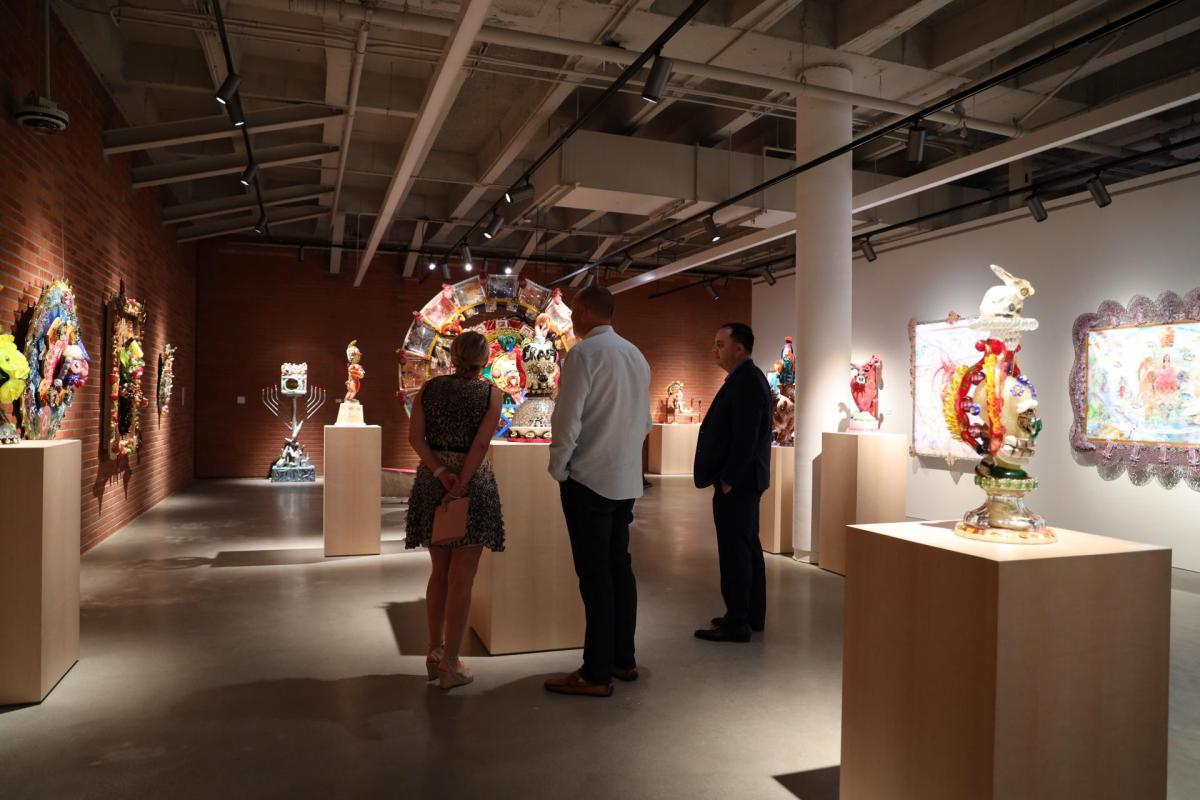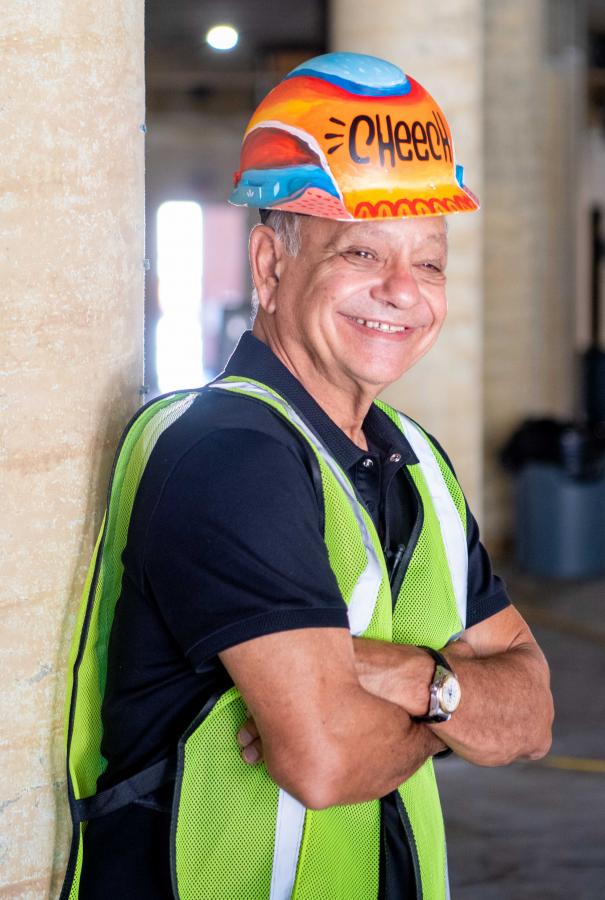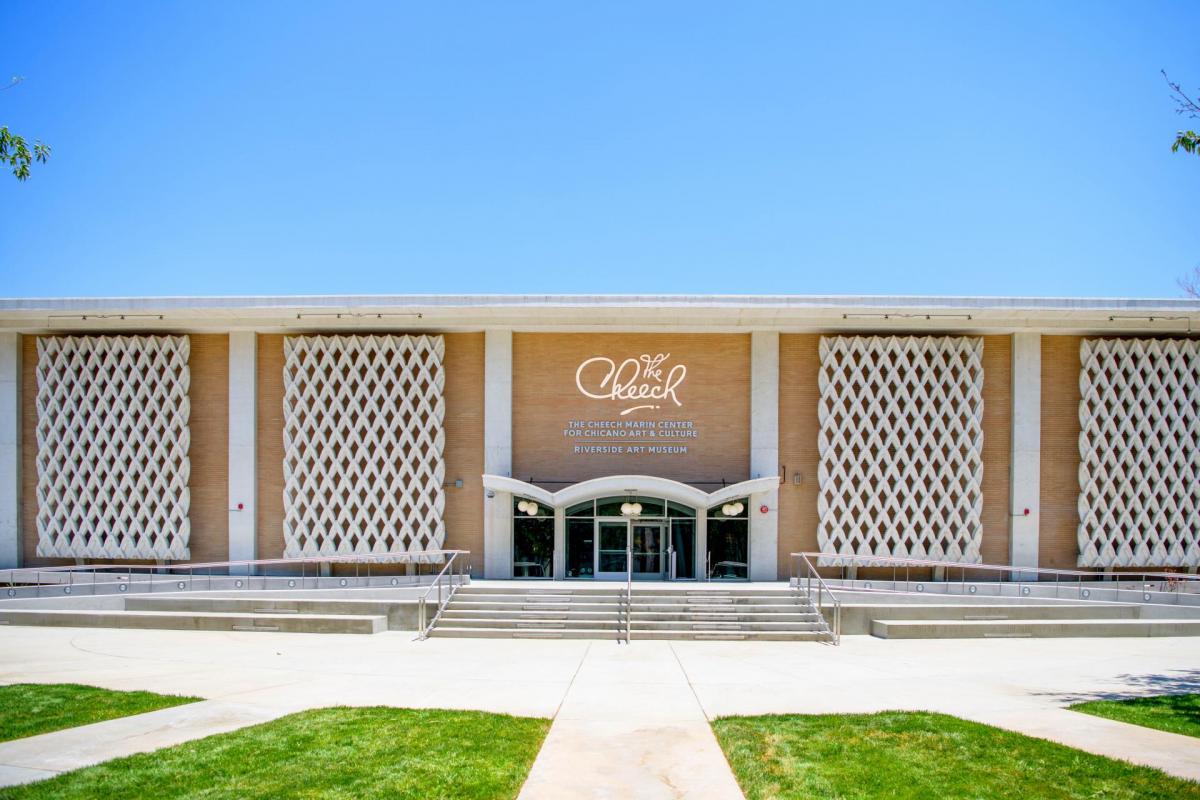The Riverside Art Museum makes history with ‘The Cheech’
The city of Riverside won the 2023 Helen Putnam Award in the Economic Development Through the Arts category. For more information about the award program, visit www.helenputnam.org.
When the city of Riverside was searching for a way to reuse its historic library building that was soon to be vacated, it turned to an unlikely ally — Cheech Marin, the actor and comedian famous for his role in the “Cheech & Chong” duo.
Demolition was not an option for the building. The historic landmark has served the community for decades. The city needed a creative and unprecedented plan that honored the historic building and surrounding national historic landmarks. It needed significant outside investment. It needed a sustained collaborative effort. It needed something that could serve as an inspiration to the community and beyond.
Riverside needed Cheech Marin.
The tired structure emerged reborn in the summer of 2022 as The Cheech Marin Center for Chicano Art & Culture, aka “The Cheech.” The nationally recognized center honors the building’s historic architecture and its legacy as a place to learn, share ideas, and inspire.
“The Cheech brings people to Riverside who have never been here before and allows them to discover our beautiful and vibrant city, and not just in our downtown,” Riverside Mayor Patricia Lock Dawson said. “The Cheech provides a doorway for people to not only enjoy this incredible arts experience, but all the other many assets that make Riverside so special.”
The five-year journey from concept to reality — a very tight turnaround in the museum world — aligned with Riverside’s ethos of equity, economic opportunity, sustainability, art, and innovation. It also overcame fears that there were no viable ways to reuse the building, given its original mid-century infrastructure and design, a significant amount of deferred maintenance, and a layout largely unusable to modern tenants.
“These paintings … are what it feels like to be Latino”
In 2016, Cheech was exhibiting a small portion of his widely traveled 700-work Chicano art collection at the Riverside Art Museum (RAM). Chicano/a/x artists draw from a range of traditions and mediums to reflect the shared culture and struggles of Mexican Americans born in the U.S.
This highly successful exhibition tripled normal attendance for RAM. It also struck a chord with the city, museum staff, and community members who were enthralled by Cheech’s collection and shocked to find out that it did not have a permanent home.
In short order, the city and RAM crafted a compelling pitch for Cheech: a permanent home for his entire collection created through a public-private partnership. The city would provide the space. Cheech would provide an unparalleled art collection. And the museum would provide the expertise, curation, and vision needed to develop and exhibit a unique collection. He agreed and The Cheech was born.
It couldn’t have come at a more pivotal moment for Riverside, which had become a majority Latino community over the last 20 years. “Our people don’t always feel represented,” said Valarie Salinas, a museum patron. “But these paintings, with their color choices and subject matter, are about what it feels like to be Latino.”
“A game changer”
The city worked with the state to secure a $9 million commitment to convert the old mid-century interior into a modern art space. RAM raised $3 million for renovations and initial operating costs, and the city provides up to $1 million in annual operating support, which is partially offset through a creative revenue split for each ticket sold. The result is an economic impact to the downtown that benefits hotels, restaurants, and shops across the city.
The Cheech has become the unrivaled, national cultural center for Chicano art. It opened with an extensive collection of works from the artists Einar and Jamex de la Torre, made possible by a partnership between RAM and the Smithsonian’s National Museum of the American Latino.
Critics welcomed the exhibit and the museum with rave reviews. The New York Times referred to the Cheech as, “… a game changer in Chicano Art,” and “… possibly the first museum in the United States entirely devoted to showcasing Chicano art and culture.” The Los Angeles Times called the Cheech an “essential repository” and stated that, “a [s]ystematic study of usable, relevant Chicano art history is now underway in Riverside.”
Even in the short time it has been open, The Cheech has had a positive economic impact. A 2023 study by the Americans for the Arts found that Riverside area residents spend about $39 on event-related expenditures (meals, souvenirs, lodging, etc.). Non-resident attendees spend about $46 in event expenditures. The Cheech has attracted an equal mix of locals and visitors from across the country. Once direct gate ticket sales are accounted for, The Cheech created a local economic impact of over $5.7 million in its first year.
“It’s been even greater than we expected,” Dawson noted. “It’s brought people into the city who have never been here and has been the gateway to so many other things in the city. As a mayor, it’s a bragging point because no other city has a museum like this.”
Over 135,000 people visited The Cheech in its first year of operation. Global coverage was staggering, with approximately 657 million internet, television, and social media views in the first four months of operations alone.
But beyond the sheer economic impact, The Cheech tells the story of Latino/a/x people in Riverside and across the nation. It’s a way for people to see themselves represented in their institutions. “We see a lot of the brown and Black community here,” said Maria Esther Fernandez, The Cheech’s artistic director. “We see young people. We see retired people. The art speaks to communities who don’t normally come out.”
Phil Pitchford is the public information officer for the city of Riverside. He can be reached at (951) 826-5975 or ppitchford@riversideca.gov. Watch this video for an overview of the project.




